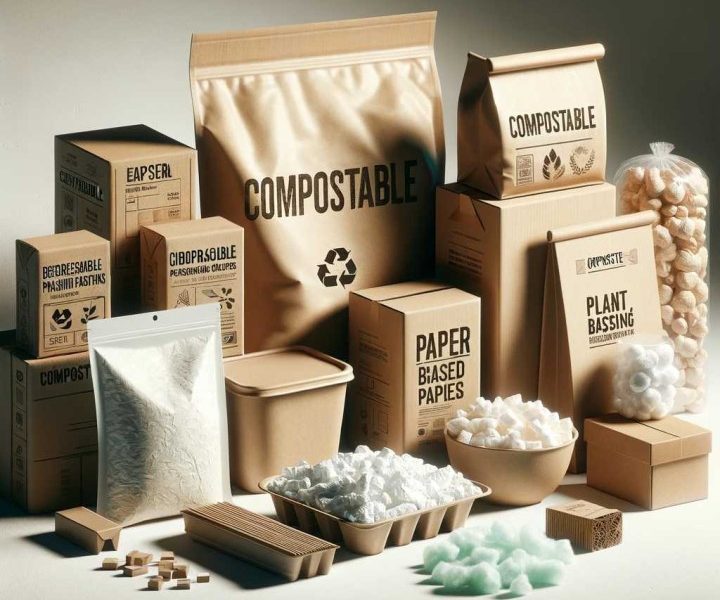As the world grapples with the challenges of climate change, the focus on sustainable practices has never been greater. One area where businesses and consumers alike can make a significant impact is through the adoption of eco-friendly packaging.
This shift is not just a trend but a necessity to reduce carbon footprints and promote environmental health. In this article, we will explore the importance of eco-friendly packaging, its role in reducing carbon footprints, and practical ways to implement it in everyday life and business operations with Eco-Friendly Packaging.
Understanding Carbon Footprints and Packaging
A carbon footprint refers to the total greenhouse gas emissions caused directly or indirectly by an individual, organization, event, or product. Packaging contributes significantly to these emissions, primarily due to the energy-intensive processes involved in the production, transportation, and disposal of traditional packaging materials like plastic.
Plastic packaging, for instance, is derived from fossil fuels and is notorious for its long decomposition time. Every step of its lifecycle—from extraction and manufacturing to disposal—releases substantial amounts of carbon dioxide and other harmful gases into the atmosphere. In contrast, eco-friendly packaging materials are designed to minimize environmental impact, offering a sustainable alternative to reduce these emissions.
Benefits of Eco-Friendly Packaging
- Reduced Greenhouse Gas Emissions Eco-friendly packaging materials such as paper, cardboard, and biodegradable plastics require less energy to produce. Materials like recycled paper or plant-based plastics have a significantly lower carbon footprint compared to conventional materials.
- Less Waste in Landfills Traditional packaging often ends up in landfills, where it takes decades or even centuries to decompose, releasing methane and other harmful gases. Eco-friendly packaging is often compostable or recyclable, ensuring that less waste accumulates in landfills.
- Conservation of Natural Resources Many sustainable packaging options use recycled or renewable materials, reducing the need for virgin resources. For instance, using recycled paper reduces the demand for new wood pulp, helping conserve forests and biodiversity.
- Improved Brand Image For businesses, adopting eco-friendly packaging is a powerful way to demonstrate commitment to sustainability. This not only attracts environmentally conscious consumers but also enhances brand loyalty and trust.
Materials Used in Eco-Friendly Packaging
Several materials are gaining popularity for their sustainability and functionality:
- Recycled Paper and Cardboard: Widely used for boxes and wrapping, these materials are biodegradable and easily recyclable.
- Plant-Based Plastics: Derived from renewable resources like corn starch or sugarcane, these plastics are compostable and reduce reliance on fossil fuels.
- Biodegradable Packaging: Made from materials that decompose naturally, such as mushroom mycelium or seaweed.
- Glass: Although heavier, glass is infinitely recyclable and has a much lower environmental impact over its lifecycle compared to plastic.
- Metal: Aluminum and tin are durable, lightweight, and recyclable materials often used in eco-friendly packaging solutions.
How Eco-Friendly Packaging Reduces Carbon Footprints?
- Energy Efficiency in Production Many eco-friendly materials require less energy to manufacture compared to their traditional counterparts. For instance, producing recycled aluminum uses only 5% of the energy required to produce new aluminum from raw ore.
- Reduced Transportation Emissions Lightweight materials like plant-based plastics and compressed cardboard reduce the overall weight of shipments, leading to lower fuel consumption during transportation.
- Enhanced Waste Management Materials that are compostable or recyclable ensure that less waste ends up in incinerators or landfills, both of which are significant sources of carbon emissions.
- Circular Economy Support Eco-friendly packaging often aligns with circular economy principles, where materials are reused and recycled, minimizing the need for new resource extraction and reducing overall carbon output.
Steps to Transition to Eco-Friendly Packaging
- Assess Current Packaging Practices Begin by evaluating your existing packaging materials and processes. Identify areas where you can replace traditional materials with sustainable alternatives.
- Research Sustainable Suppliers Partner with suppliers who specialize in eco-friendly materials. Look for certifications such as FSC (Forest Stewardship Council) or Cradle to Cradle to ensure credibility.
- Educate Stakeholders Engage your team, customers, and partners in the transition process. Explain the benefits of eco-friendly packaging and how it aligns with your sustainability goals.
- Start Small Implement changes gradually to manage costs and adapt to new processes. For example, start with replacing plastic bags with paper ones before transitioning to more complex solutions.
- Monitor and Improve Track the impact of your changes through metrics like waste reduction, cost savings, and carbon footprint. Use these insights to refine your approach over time.
Real-Life Examples of Eco-Friendly Packaging Success
- Lush Cosmetics Lush has revolutionized packaging in the beauty industry by introducing “naked” products that require no packaging at all. For items that need containment, they use recycled or biodegradable materials.
- IKEA IKEA has committed to phasing out single-use plastics and replacing them with renewable or recyclable materials by 2030. Their innovative use of mushroom-based packaging is a testament to their dedication.
- Coca-Cola Coca-Cola has developed a 100% plant-based plastic bottle, demonstrating how even large corporations can adopt sustainable packaging solutions.
Challenges of Eco-Friendly Packaging
While the benefits are clear, transitioning to eco-friendly packaging does come with challenges:
- Higher Initial Costs: Sustainable materials can be more expensive upfront than traditional ones.
- Limited Availability: Not all regions have access to a wide variety of eco-friendly packaging materials.
- Consumer Education: Encouraging consumers to recycle or compost packaging requires ongoing education and engagement.
The Future of Eco-Friendly Packaging
The demand for sustainable packaging is set to grow exponentially as consumers and businesses recognize its importance. Innovations like edible packaging, smart biodegradable materials, and carbon-negative packaging are likely to shape the future. Governments and regulatory bodies are also stepping up, implementing policies to encourage sustainable practices.
Conclusion
Eco-friendly packaging is more than a choice; it is a responsibility for both individuals and businesses striving to reduce their environmental impact. By switching to sustainable materials, companies can significantly lower their carbon footprints, conserve resources, and build stronger relationships with eco-conscious consumers. As technology and awareness continue to evolve, adopting eco-friendly packaging is not just a step forward but a leap toward a healthier planet for future generations.









